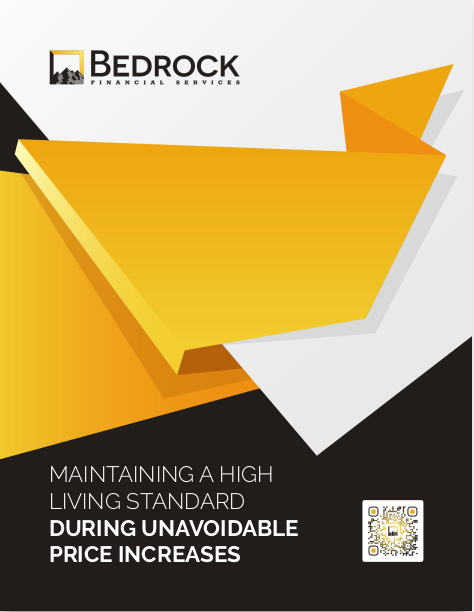Key Takeaways
-
Treating retirement planning as a real conversation builds trust and long-term relationships—it’s not about leading with numbers but leading with empathy.
-
Asking layered, open-ended questions rooted in life context—not just financial goals—makes your conversations both memorable and actionable.
Shift Your Mindset from Presenter to Partner
When you sit across from a client to discuss their retirement future, you’re not giving a performance. You’re starting a relationship. And like any strong relationship, it depends on two-way communication. You may have the knowledge and structure, but they bring the emotion, fear, dreams, and family dynamics that shape their decisions.
Instead of jumping into plan options, timelines, and withdrawal strategies, begin with a pause. Frame yourself as a guide, not a seller. Retirement planning isn’t just about money—it’s about what people want their final chapters to feel like.
Start with the Why, Not the How
Before you talk about IRAs, TSP withdrawals, annuities, or tax brackets, ask the questions that get to the heart of the conversation:
-
“What does a fulfilling retirement look like for you?”
-
“Who do you picture spending time with when you’re no longer working?”
-
“What worries you about life after work?”
You aren’t just collecting data. You’re helping them articulate something they may not have said out loud before. Once their emotional framework is clear, only then should you begin mapping the financial structure around it.
Keep the Conversation Visual, Not Just Verbal
Many clients can’t follow charts, percentages, or financial terms alone. Instead of overwhelming them with industry terminology, turn the conversation into something visual and relatable:
-
Use timelines: “If you retire at 63, here’s what the next 30 years might look like.”
-
Use simple comparison blocks: “With this strategy, you’d likely cover healthcare costs until age 90. With this one, you’d have more flexibility but more risk.”
-
Use metaphors: “Think of your income like a three-legged stool—Social Security, savings, and pension. We’re here to make sure none of those legs wobble.”
By anchoring abstract ideas to tangible visual cues, you make the conversation feel like guidance, not instruction.
Stop Repeating the Same Script
Most clients have heard the same retirement buzzwords for years—diversify, compound, allocate, withdraw. And while these concepts matter, what they remember is how you made the ideas personal to them.
If every client gets the same presentation in a different suit, they’ll forget it. If they feel like your conversation was tailored to their life, they’ll come back. Use your initial fact-finding process to drive original commentary in every meeting.
Instead of saying, “This portfolio is balanced for moderate growth,” say, “This setup gives you a good chance to travel every year and still maintain a stable income.”
Listen Longer Than You Talk
The most underrated skill in retirement planning conversations is silence. The space you leave for your client to speak is where the real work happens. Don’t rush to fill every pause with stats or strategies. Let them think. Let them feel.
Set a rule for yourself: if you talk for more than 60 seconds at a time, you must stop and let them respond. Your ability to process their reactions and ask thoughtful follow-up questions is more impactful than any chart you can present.
Clarify the Timeline—And Let It Breathe
Clients often feel overwhelmed because the timeline to retirement feels like a single cliff—they either leap or they don’t. You can defuse that pressure by breaking retirement into stages:
-
Pre-retirement (5–10 years out): Focus on debt, savings acceleration, long-term care conversations.
-
Transition window (1–2 years out): Emphasize income planning, Medicare timing, housing decisions.
-
Early retirement (first 5 years): Cover withdrawal strategy, travel budgets, tax management.
-
Long retirement (15–30 years): Talk about inflation, health changes, estate plans, legacy goals.
Framing the conversation in phases makes it feel more manageable and gives you multiple natural checkpoints for re-engagement.
Don’t Assume They Understand What You Mean
You’ve said “RMD” a hundred times this month. Your client might have never heard it. Be aware that even if they nod, they may not understand.
Use this three-part approach:
-
Say the term.
-
Define it simply.
-
Tie it back to their situation.
Example: “You’re required to take Required Minimum Distributions—or RMDs—from retirement accounts once you turn 73. For you, that means starting in 2027, we’ll need to plan withdrawals that align with your tax bracket.”
This rhythm creates clarity without making them feel uneducated.
Normalize Emotions About Money
Even the most successful clients may carry shame, fear, or confusion about money. Avoid phrases like “You should’ve…” or “Why didn’t you…”. These close the door to honesty.
Instead, create safety:
-
“A lot of people have this question.”
-
“You’re not the only one thinking about this.”
-
“It’s completely normal to feel that way.”
You’ll get better input and deeper insights from your clients when they don’t feel judged.
Make the Future Feel Concrete, Not Hypothetical
“Someday” is vague. Clients engage better when they can picture outcomes in real time. Instead of abstract forecasts, root projections in concrete moments:
-
“In 2026, your mortgage will be paid off. That’s $1,200/month freed up.”
-
“By age 70, your Social Security income could be around $2,500/month.”
-
“In the first 3 years of retirement, we’ll monitor your travel and leisure budget closely.”
By bringing the conversation down to calendar years, ages, and monthly figures, you make it real.
Speak to the Spouse or Partner Too
Retirement planning should never be a one-person conversation if there’s a partner involved. Often, one spouse may be more financially engaged than the other. But both need to feel included.
Balance your eye contact, use inclusive language (“you both,” “your goals together”), and ask direct questions to the quieter partner. Their voice matters, and their buy-in is essential for long-term success.
End with Action, Not Ambiguity
A great retirement planning conversation ends with a shared sense of direction. Never let a client leave confused about what comes next. Summarize clearly:
-
“Here are the three things we’ll do this month.”
-
“We’ll revisit this section next quarter.”
-
“You’ll get a follow-up email outlining all the changes we discussed.”
Action steps build momentum. They turn discussion into forward movement.
Real Conversations Create Real Loyalty
In 2025, the client experience isn’t defined by how much you know—it’s defined by how heard your client feels. That starts with your ability to replace your usual sales script with authentic dialogue.
The strongest retirement relationships are built on shared understanding, visual clarity, emotional safety, and realistic timelines. Clients remember when they felt seen—not when they were impressed.
Make Every Interaction a Turning Point
When you approach retirement planning as a real conversation, you transform your client relationships from transactional to transformational. And when you do that consistently, referrals become natural, retention improves, and your work feels more meaningful.
At Bedrock Financial Services, we help professionals like you deliver this kind of real-world impact with tools, training, and lead generation that put relationship-building first. Sign up today and let us help you bring these conversations to life.







